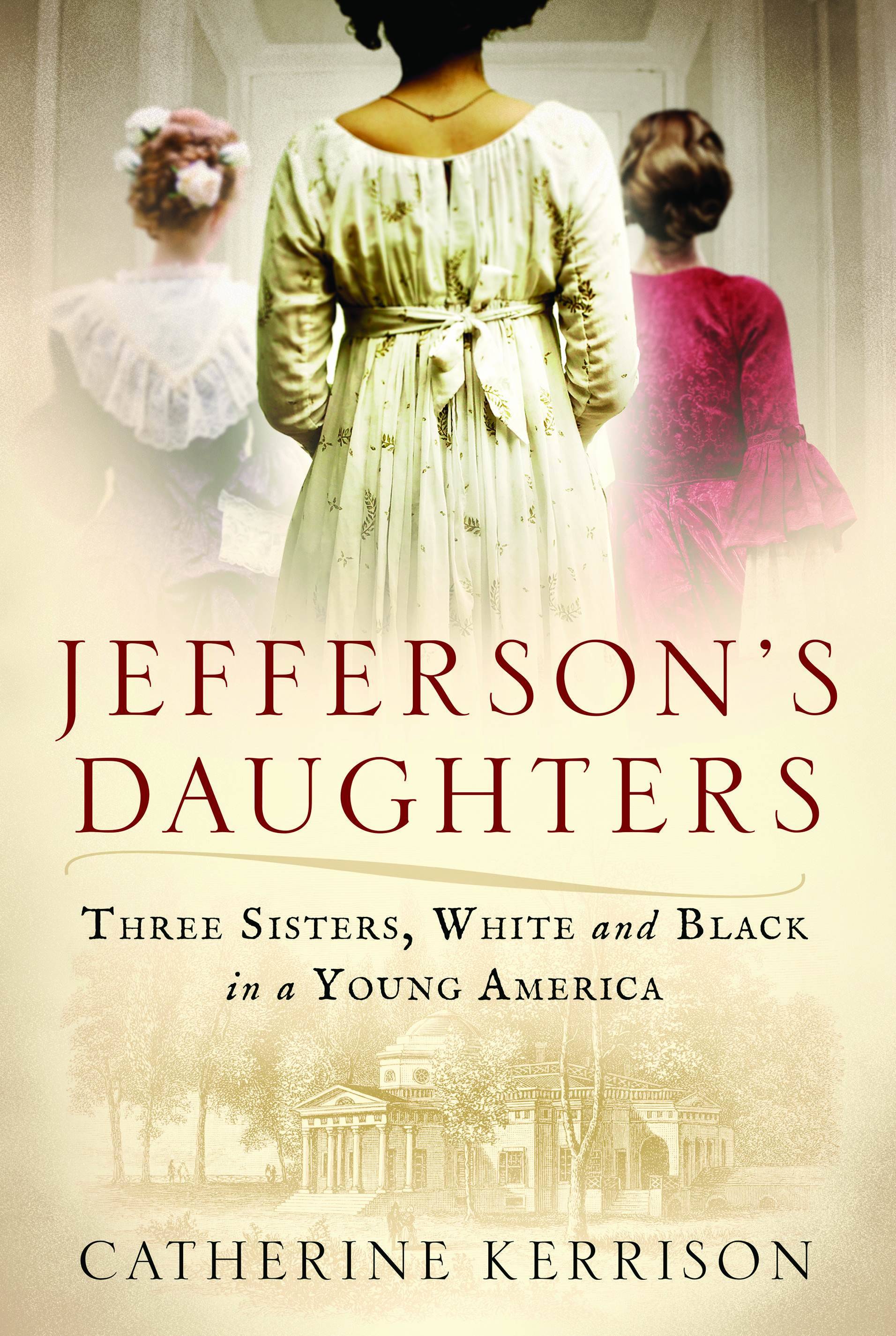Which one is your favorite?
That’s a question heavy with danger, as any parent knows. You might be asked, but you can’t choose one child over another. Parents are supposed to love each of their children differently but equally though, in the new book “ Jefferson’s Daughters” by Catherine Kerrison (c.2018, Ballantine Books, $28, 448 pages), history sometimes shows otherwise…
When young Thomas Jefferson married the widow Martha Wayles Skelton, their first nights were spent inside a promise: Monticello, on the grounds he’d received from his father, was only partially completed. Martha Jefferson would spend just “a little over half of her married life” and much heartbreak there.
After having birthed several children, most of whom didn’t live, Martha sickened and died in the fall of 1782; perhaps compassionately, Thomas Jefferson was sent by the U.S. Congress to Europe. With him, he took his daughter, 11-year-old Martha; and James, the son of Elizabeth Hemings, Jefferson ’s late wife’s slave and her half-sister. Jefferson sent his youngest two daughters, along with Elizabeth ’s youngest daughter, Sally, to his sister-in-law’s home.
Known as a lively, intelligent girl, young Martha was quick with languages, could sing and dance, and had become her father’s best support after her mother’s death. Shortly after she arrived in Paris , she was sent to a convent school, and considered the idea of becoming a nun.
In 1787, Jefferson sent for his second daughter, then-9-year-old Maria, who arrived in Paris with 14-year-old “companion-maid” Sally Hemings. Maria must have been rather used to being uprooted: over the years, her father had sent her to several homes to be raised and educated. Paris was just another in a long line. No record was made of Sally’s feelings, although Kerrison imagines she was unhappy.
Just two years later, Thomas Jefferson, his daughters, and his slaves returned home to Virginia, reportedly to great fanfare. Seventeen-year-old Martha, wishing to avoid being suddenly “supervised,” quickly became betrothed. Eleven-year-old Maria, a sweet child, was soon sent to Philadelphia, to boarding school. Sixteen-year-old Sally, pregnant with her master’s child, didn’t have to come home to Virginia at all; in France, she was legally free, but she chose to return after negotiating with Jefferson.
She’d be, after all, “a mother of children destined for freedom.”
For the casual reader, “Jefferson ’s Daughters” may be a challenge but that’s not author Catherine Kerrison’s fault; it’s because of naming habits of eighteenth-century people. For instance, there are several Marthas in this book, so beware.
There’s also a lot of backstory here, too, but it’s necessary. Kerrison reaches well back into time to explain several points that she makes later, especially when it comes to Sally Hemings, her actions, and her decisions that showed eye-popping strength. There — once we get more into Hemings’ life and that of her eldest daughter, Harriet — is where this book becomes totally compelling and can’t-put-down irresistible.
Of course, it’s perfect for historians but anyone who’s interested in women’s issues and Black history will be happy reading this book, too. Once you settle into “Jefferson ’s Daughters,” it may become one of your favorites.
The Bookworm is Terri Schlichenmeyer. Email her at bookwormsez@yahoo.com.

